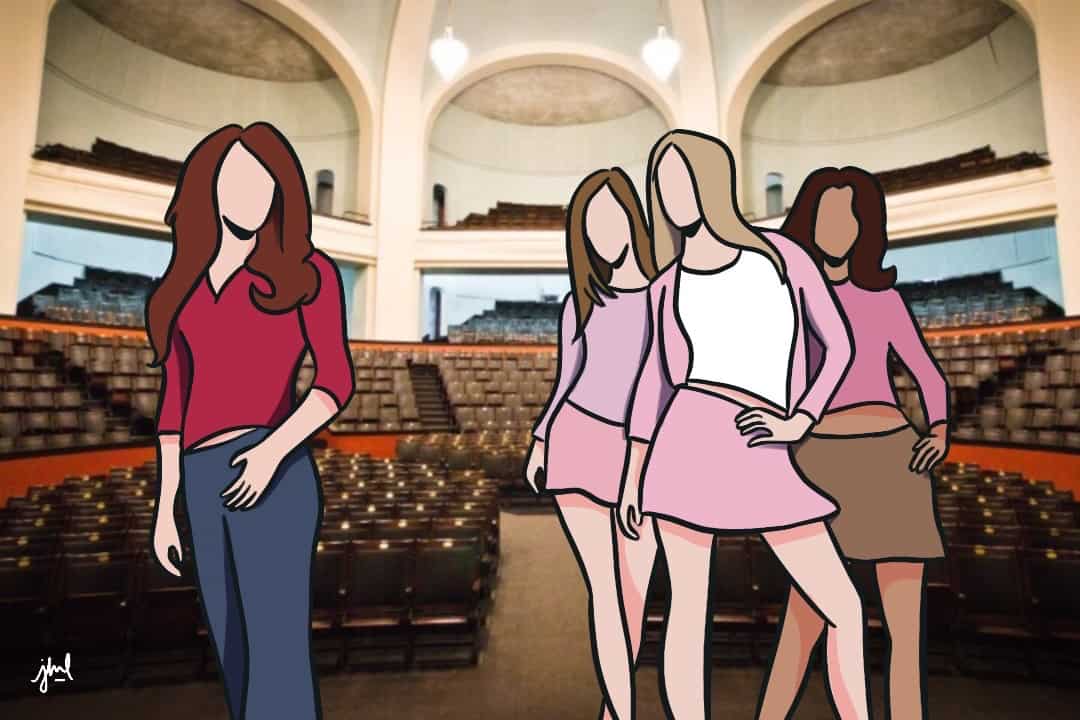Toronto is known for many of its unique sights — the CN Tower, the Royal Ontario Museum, Casa Loma, and, of course, the University of Toronto. In movies such as The Incredible Hulk and RoboCop, Torontonians may spot city staples like these scattered throughout, and are sure to continue spotting them as new blockbusters are filmed in the city.
Yet, the city itself often takes a backseat in the film industry, posing as other well-known, primarily American cities. Countless global film phenomena have been filmed in Toronto, but have disguised the city as other prominent locations. Guillermo del Toro shot The Shape of Water — the 2017 winner of the Academy Award for Best Picture — in Toronto, using UTSC, Massey Hall, and the Lakeview Restaurant as backdrops for various scenes. Yet, the film itself was set in 1962 Baltimore, Maryland.
The same is true of Good Will Hunting, an Academy Award winning film from 1997. Although the movie was set in Boston, Massachusetts, UTSG and the Central Technical School, a high school located on Bathurst Street, were used to fill in for Harvard University and MIT, respectively. Louis Leterrier’s 2008 film The Incredible Hulk was also primarily filmed in Toronto, using U of T spots such as Convocation Hall, King’s College, and Knox College to emulate various New York City locations.
Toronto may be the ‘Hollywood of the North,’ but it’s hardly ever established as its own setting in popular media. Film lovers and city dwellers alike may wonder why this is, and if we will ever get to see Toronto playing itself in the future.
Money, money, money
In the past two decades, Toronto’s film and television production has risen to become one of the city’s major economic industries. In March 2022, Toronto Mayor John Tory announced that the city had invested $2.5 billion in film, television, and digital media productions over the previous year. The city saw 1,468 individual productions and 7,800 production day bookings in 2021. Toronto’s screen production industry is expected to undergo even more rapid growth in 2022.
One major reason that production and media companies choose to film in not only Toronto, but Canada in general, is the low filming costs. Other than the high exchange rate between the American and Canadian dollar, there are many financial benefits to making a movie in the Hollywood of the North.
The Canadian film industry offers significant tax incentives for film, television, and digital media. Canada requires no entertainment taxes — and even offers stimuli — for hiring local actors and musicians. According to the federal government, various tax credits can save filmmakers up to 45 per cent on qualified labour costs, as well as up to 35 per cent on total production costs.
Additionally, Canadian cities have a lower cost of living than American ones, so movie sets are much more affordable. Canada also offers a large and distinguished pool of talented individuals who are available at cheaper rates than in the United States, making production less costly.
From a creative standpoint, Toronto is a perfect filming location, as it experiences four distinctive seasons. Summer, spring, fall, and winter in the city are all very different; therefore, filmmakers have greater freedom when deciding the time period during which to film their piece.
There is also plenty of land available in Canada that offers the physical and natural beauties that are harder to access in the US. For example, in the blockbuster movie Pacific Rim, exterior scenes were shot in the Scarborough Bluffs and in the Port Lands near the waterfront. In the city itself, Toronto itself has several distinct neighbourhoods that, although recognizable to locals, are both aesthetic and vague enough to stand in for various American cities.
An authentic future
More often than not, Toronto is merely a stand-in for other well-known locations around the world. This fact was recently both acknowledged and investigated in Imposter Cities, an exhibition in the 2021 Venice Architecture Biennale. Commissioned by the Canada Council for the Arts, the exhibition explored how Canadian cities frequently portray other major cities and how this relates to architecture and our national identity.
The purpose of this exhibition was to encourage thought about the way that architecture is experienced in the digital age, how architectural identities are formed, and to convey the fact that our perception of the world is based on constructed realities. As reported in The New York Times, the creators of the exhibition stated that the reasons for Canada’s “impostor” status in the film industry were a “friendliness and a general unfamiliarity with Canada among international movie audiences, allowing it to easily stand in without being recognized.”
In a 2019 article for Architect Magazine, critic Witold Rybczynski commented on Canada’s soft and relatively unrecognizable architecture: “Canadian architects have generally toed the Modernist line, preferring to leave radical experimentation to others.” The New York Times article adds that Canadian architecture has received less global recognition, as it has been interpreted as “timid,” boosting the drive for filmmakers to use cities like Vancouver and Toronto as ‘impostors.’
In 2022, however, Toronto is continuing to develop its own reputation as a setting in movies and TV shows. The city can be seen ‘playing itself’ in the Pixar hit Turning Red, for example. This American-produced movie showcases distinctive Toronto locations, such as the CN Tower and city skyline. As Toronto is one of the most diverse cities in the world, the film accurately portrays the city by telling the story of a Chinese-Canadian girl’s discovery of her family background.
As racial and gender representation progresses throughout the film industry, Toronto will surely become the focus of more Hollywood projects. The city not only has a wide range of talent, but demographically sets a leading example for diversity and inclusion that could be more frequently showcased. Let’s hope that in the coming years, Toronto’s charms become more widely recognizable in popular works, showing the world that it is the true Hollywood of the North.


